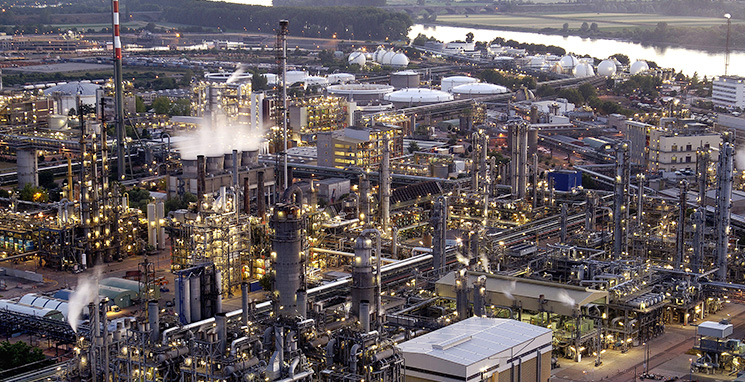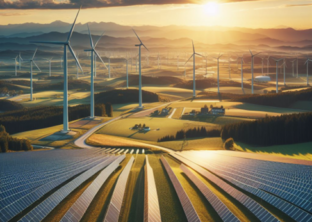The heart of the chemical park goes electric
Steam cracker – the heart of every chemical park. Steam cracking is a petrochemical process in which long-chain hydrocarbons such as naphtha are converted into short-chain hydrocarbons by thermal cracking in the presence of steam. Numerous value chains start in the steam crackers. The products obtained, such as olefins, methane and pyrolysis gasoline, are used as raw materials, for example in the production of plastics, paints and solvents.
The steam cracker is one of the most complicated production plants in the petrochemical industry and reaches considerable dimensions in a chemical park. BASF’s two steam crackers at the Ludwigshafen site are among the company’s largest production plants and form the heart of the chemical park. Steamcracker II covers an area of around 64,000 square meters, which is roughly equivalent to thirteen soccer fields. Numerous plants at the Ludwigshafen site depend on a constant supply from the steam crackers. Around 140 employees ensure that the two plants are in operation around the clock. They process around two million metric tons of naphtha each year, from which around 620,000 metric tons of ethene and 350,000 metric tons of propene are produced in the two plants together.
BASF operates five steam crackers worldwide. In Germany, 10 steam crackers are currently in operation; in the EU28, around 50 steam crackers from twenty companies are running. The world’s largest steam cracker is located in Ruwais (Abu Dhabi) and has a production capacity of 1.5 million metric tons of ethene per year. BASF’s steam crackers in Antwerp (Belgium) and Nanjing (China) and SABIC’s steam cracker at the Geelen site (Netherlands) achieve similar dimensions.

The sheer dimension of a steam cracker shows very clearly how important it is to convert the huge production plant to a low-carbon (CO2) chemical industry. Heating the cracking furnace accounts for around 90 percent of a steam cracker’s CO2 emissions. More than 300 million metric tons of CO2 emissions are generated worldwide for steam cracking. In order to achieve a reduction in these greenhouse gas emissions, research is being carried out worldwide into the technology of an electrically heated steam cracker furnace. Currently, this technology is not yet in use, but a consortium consisting of BASF, Sabic and Linde is planning to develop and build a pilot plant with an electrically heated steam cracker furnace. This would be the world’s first electrically heated steam cracker. Instead of fossil fuels, sustainably generated electricity would then be used to heat the cracking furnaces. The conversion would cut CO2 emissions by around 90 percent.
BASF now plans to build a multi-megawatt pilot plant with electric heating at its Ludwigshafen site by 2023. Applications for funding have been submitted to the EU and the German Environment Ministry. A little further along in applying for funding is a consortium of DOW, Shell and Dutch institutes, which plans to build a pilot plant by 2025 with the help of the Dutch government. The U.S. chemical company operates three steam crackers at its Terneuzen site in the Netherlands.
The electricity for BASF’s future heated steam crackers could then come from offshore wind farms in the North Sea. For the Ludwigshafen site, BASF is cooperating with the German energy company RWE on an offshore wind farm in the German North Sea; for the Antwerp site, where a BASF steam cracker also operates, BASF is cooperating with Vattenfall on an offshore wind farm off the Dutch North Sea coast. The conversion of the steam crackers to an electrically heated version must go hand in hand with the massive expansion of renewable energies, such as offshore wind farms in the North Sea. Without the provision of sufficient “green” electricity, the math of reducing CO2 emissions from steam crackers doesn’t add up.
SVP is staying tuned to this exciting race.

Dr. Volkhard Francke, Market Intelligence Senior Expert
Sources:
- BASF Homepage
- BASF Pressemitteilung 03/2021
- Chemietechnik 06-07/2021
- Petrochemicals Europe Homepage







